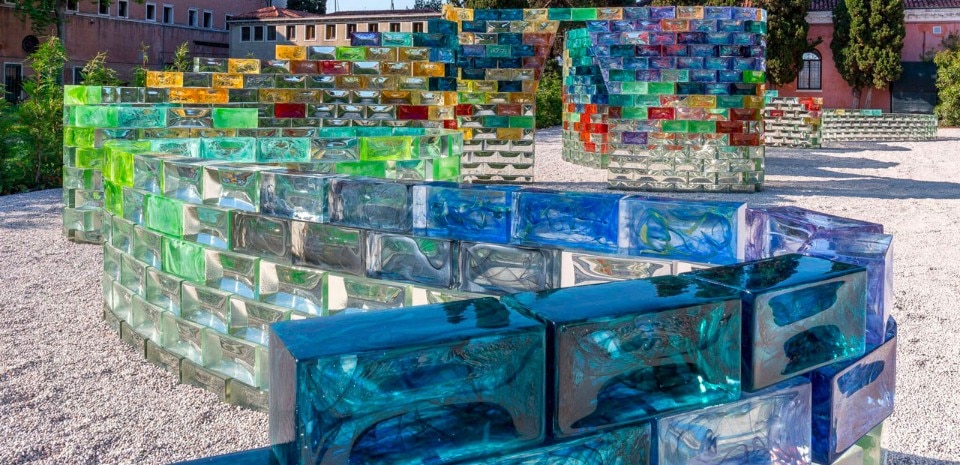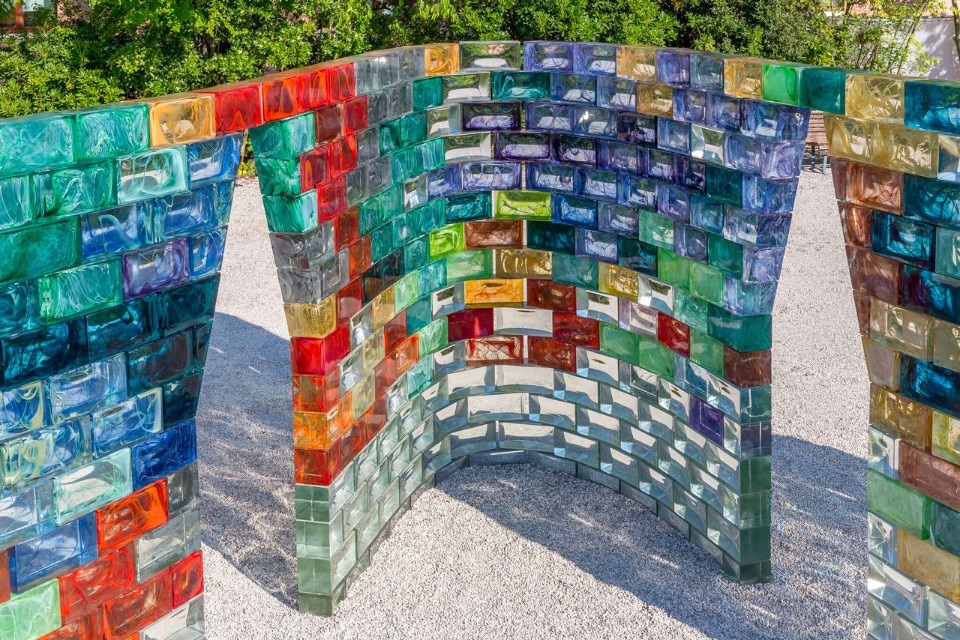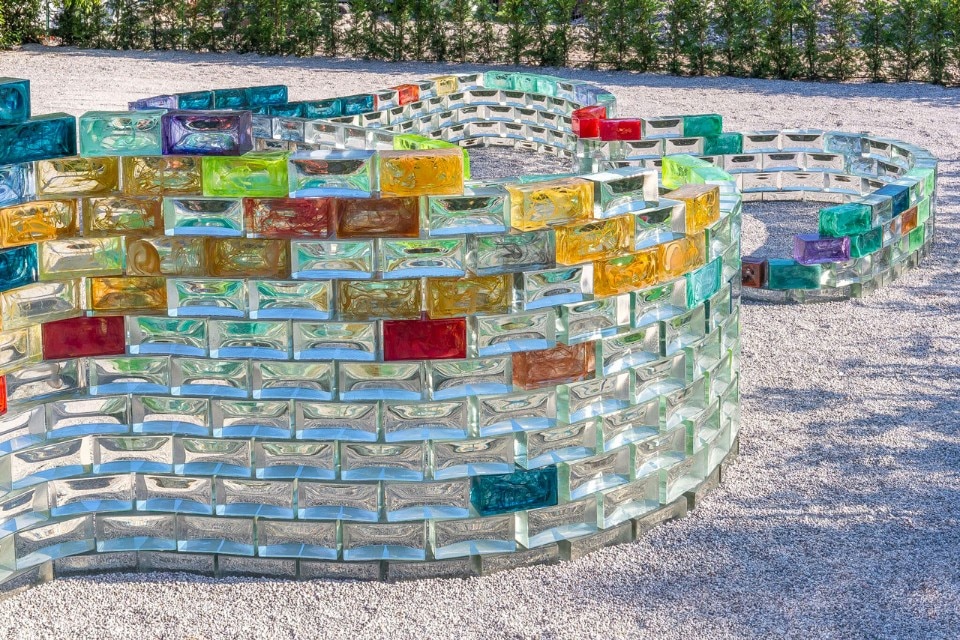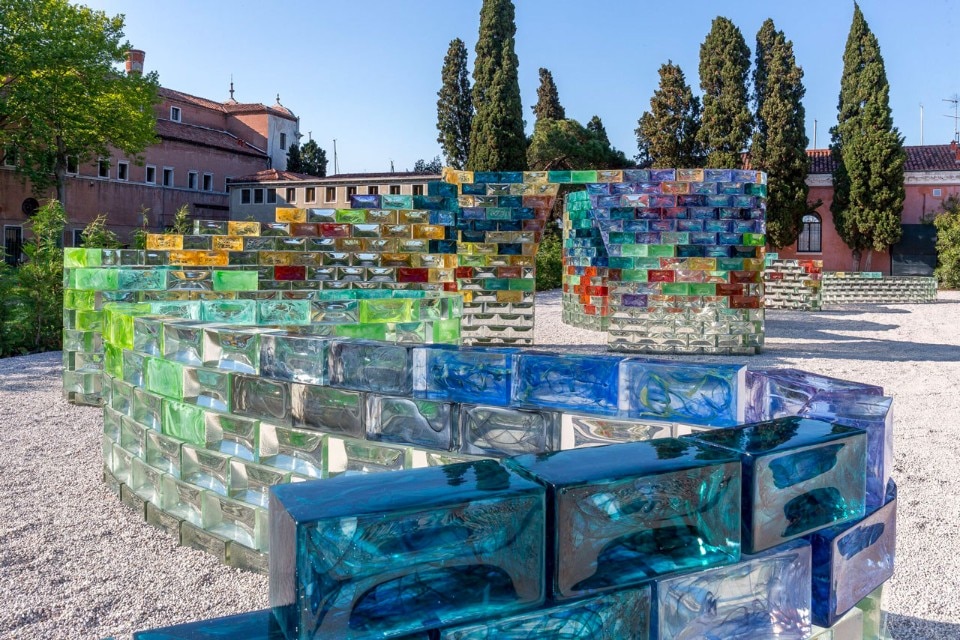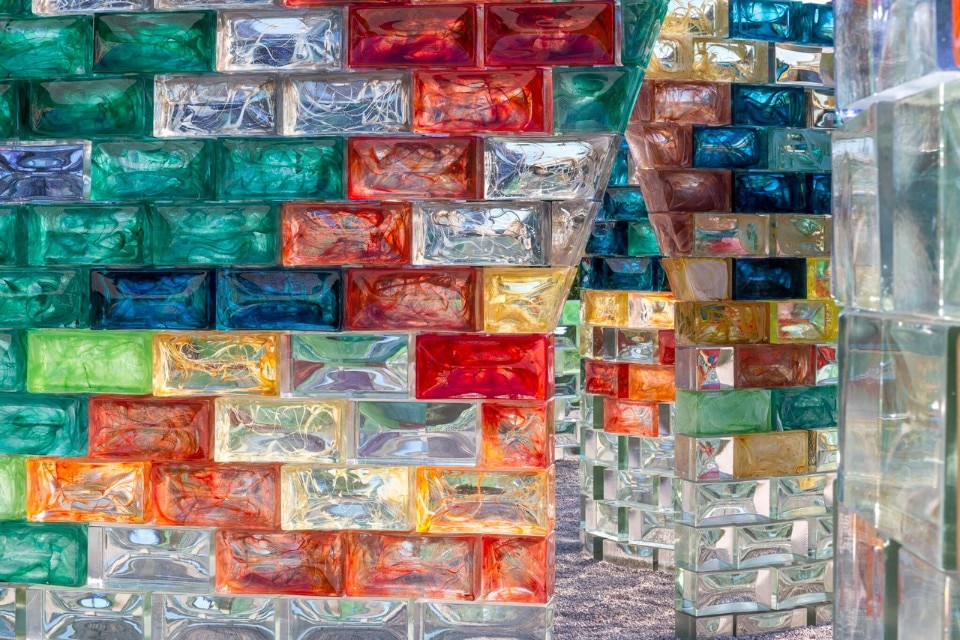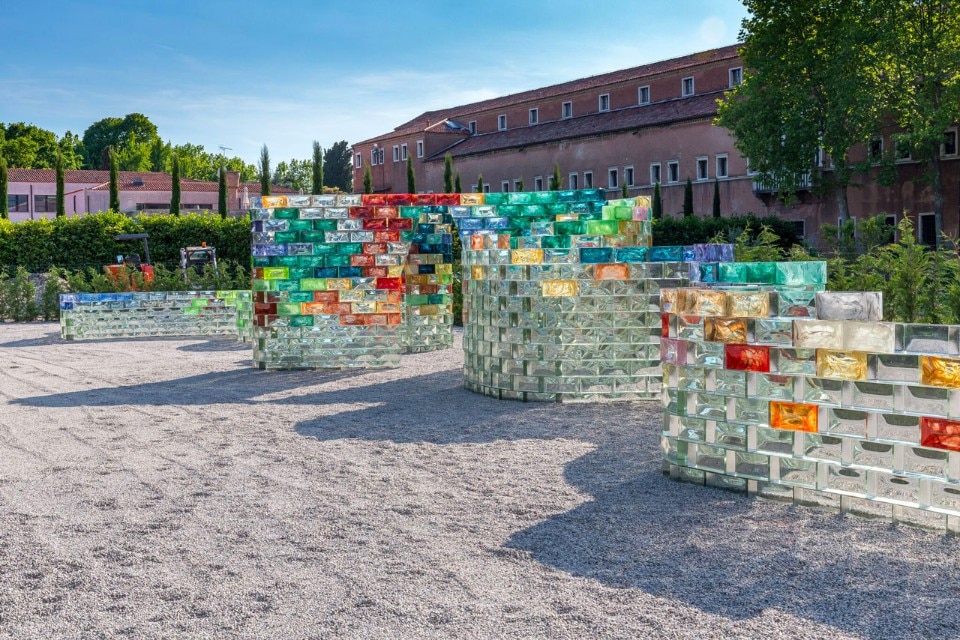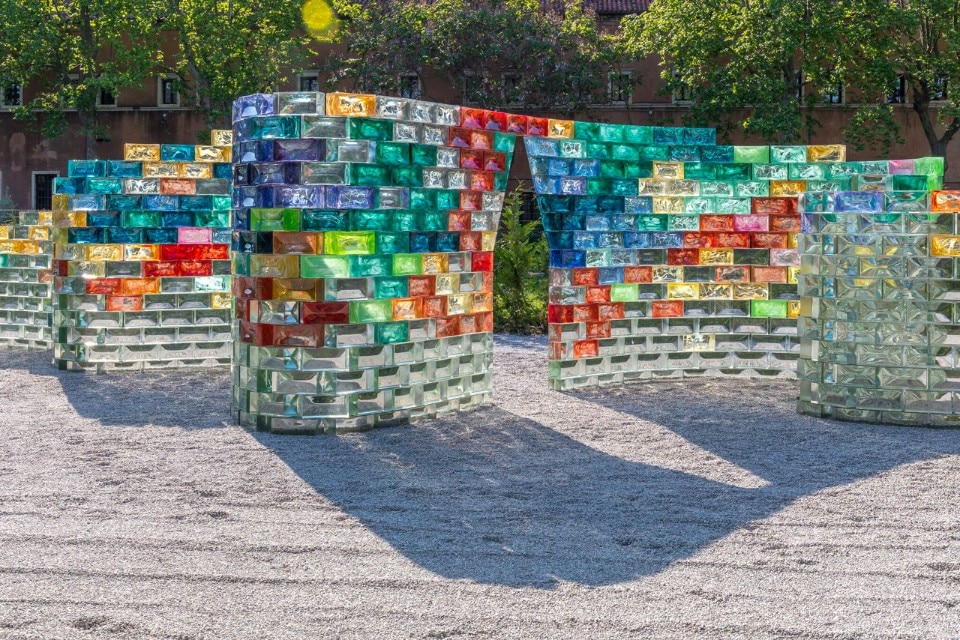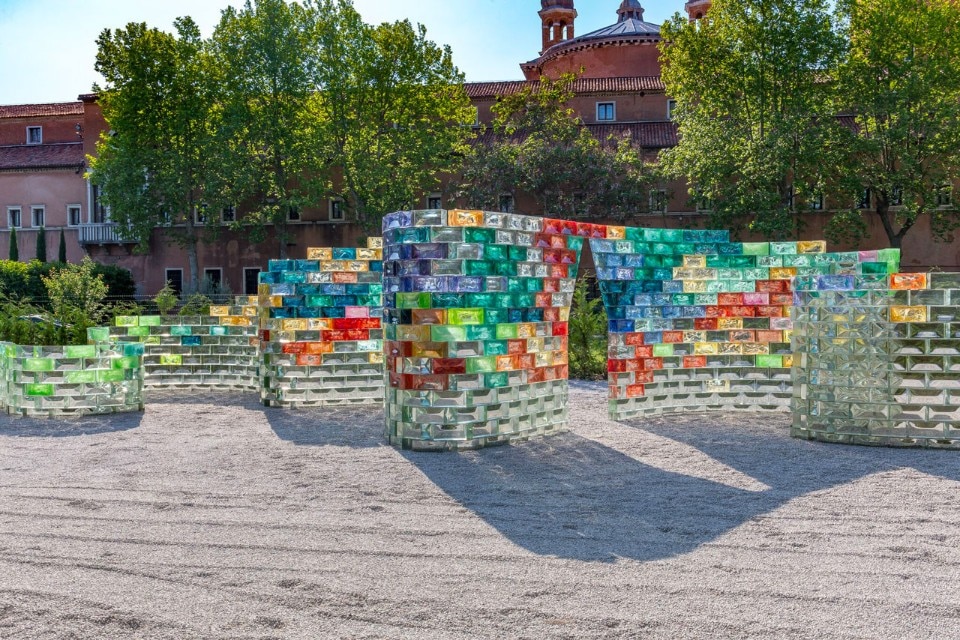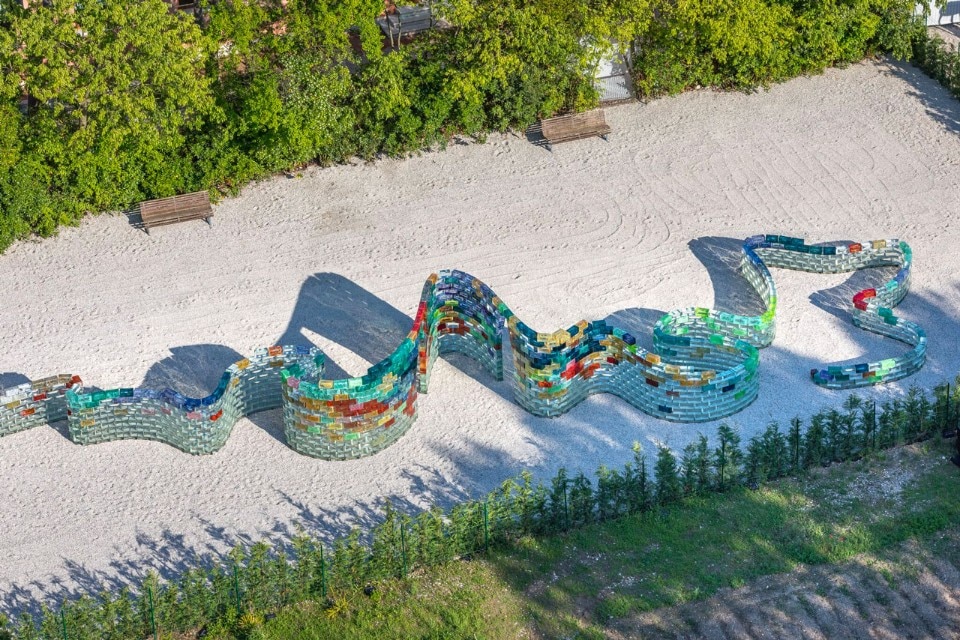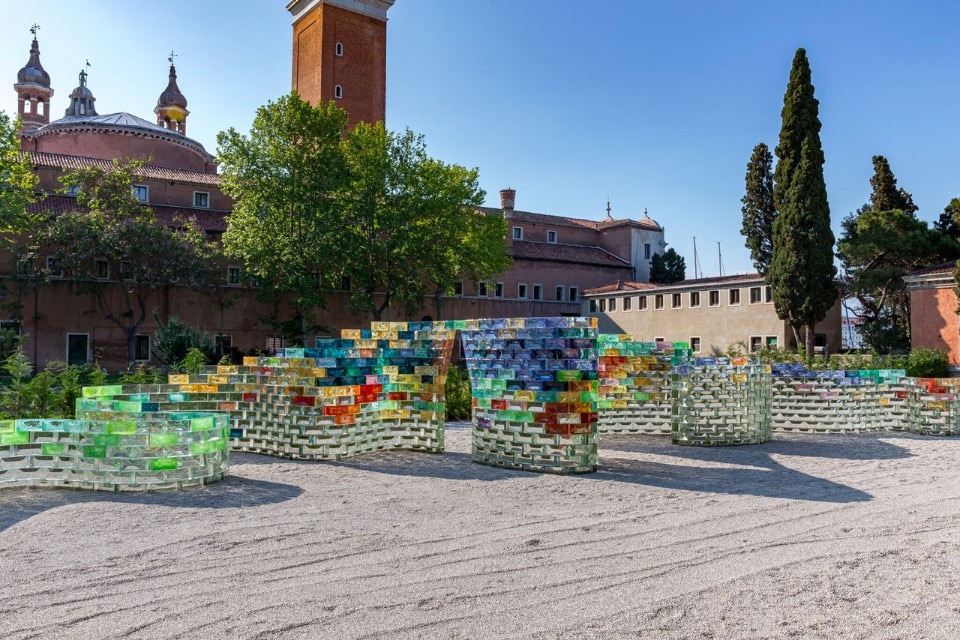
 View gallery
View gallery
Approximately half of the bricks are made of clear glass. The other half span a palette of 26 colours, and are made using a technique where each brick contains a storm-like effect of swirling colour, while remaining transparent. For this project, the individual bricks present the idea of modules of contained chaos. The artist combines these bricks to form an abstract, painterly pattern when viewed from afar, which, upon closer inspection, reveals unexpected worlds of detail. The muted blues, greens, pinks, greys and browns of the palette are drawn from colours used in first century Roman glassmaking created by the presence of sulphur, copper, manganese, and other metals and minerals.
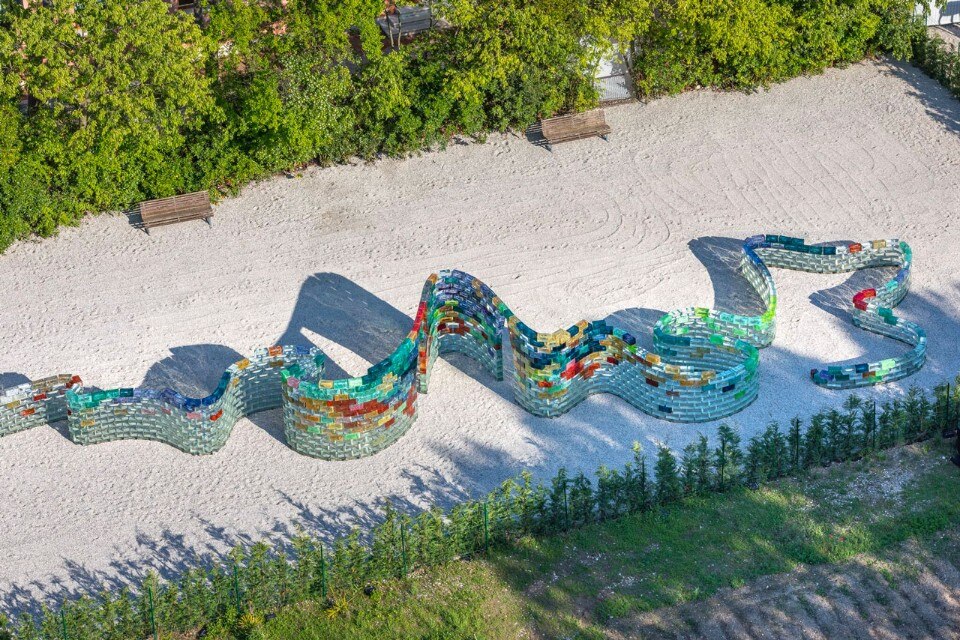
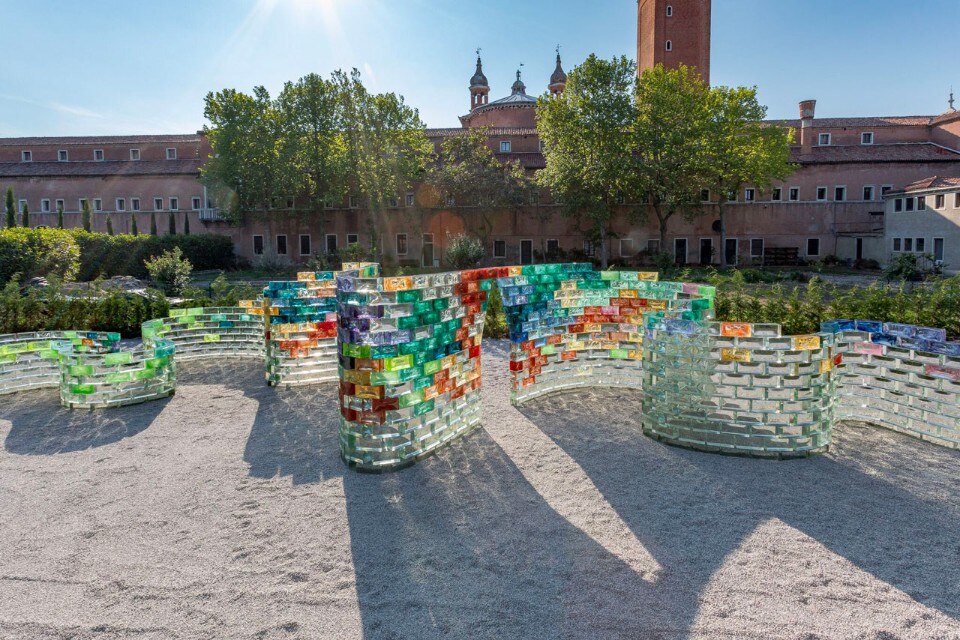
until 30 November 2018
Pae White, Qwalala
Le Stanze del Vetro
Isola di San Giorgio Maggiore, Venice


